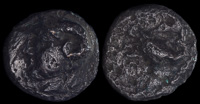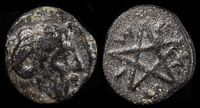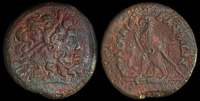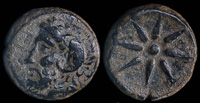Ammon
View All Tags
Amun’s earliest form was that of a god associated with air and wind, which gave him a role as a deity of creation. His name itself is often interpreted to mean “the Hidden One,” reflecting the mysterious and unseen nature of his power. As a god of the air, he was linked to the breath of life, which gave him a crucial role in maintaining the balance of the world. Amun’s status as a creator god was central to his identity, and he was often depicted as a man with a ram’s head or simply as a man wearing a crown with two tall plumes.
Amun’s rise to prominence was particularly evident during the 18th Dynasty (c. 1550–1295 BCE) in Egypt, when the city of Thebes became the religious capital of the New Kingdom. The Pharaohs of this period sought to align themselves with Amun as a symbol of divine kingship, and the god was associated with the Pharaoh’s power and authority. The great Temple of Karnak in Thebes, one of the largest religious complexes ever built, was dedicated to Amun and became his chief center of worship. The temple complex housed massive statues and sanctuaries dedicated to Amun, and it played a key role in religious and political life.
In addition to his role as a creator god, Amun was also seen as a god of fertility, and his influence spread far beyond Egypt. During the reign of the Pharaoh Amenhotep III, and later his son Akhenaten, Amun-Ra became the object of political and religious power struggles, especially as Akhenaten attempted to replace him with the worship of the Aten, the sun disk. Despite these challenges, Amun remained the central figure in Egyptian religion for centuries. His high priesthood held substantial political power, and his image and influence persisted well into the later periods of Egyptian history.
Ammon was also adopted into the pantheons of other ancient cultures, particularly in the regions around Egypt. In Greek and Roman traditions, Ammon was often syncretized with the god Zeus, sometimes referred to as Zeus-Ammon or Jupiter Ammon, reflecting the fusion of Greek and Egyptian religious practices. In this form, he was revered as a god of oracles and prophecy, particularly at the famous Oracle of Ammon at Siwa, where Alexander the Great visited to consult the deity and affirm his divine status.

Aphytis, Macedon 430-390 BCE

Pitane, Mysia 350-300 BCE

Ptolemy IV 222-204 BCE

Thymbra, Troas 4th century BCE
